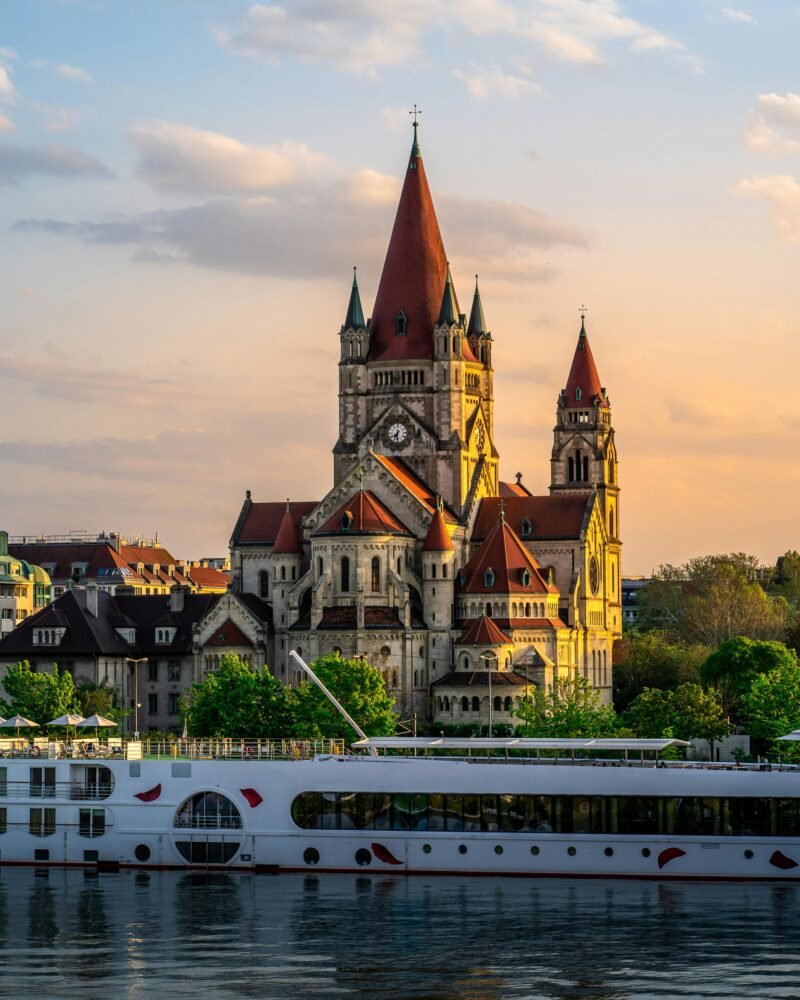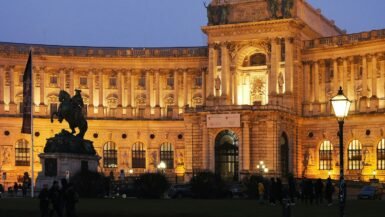Nestled in the heart of Europe, Vienna stands as a testament to timeless elegance and cultural richness. Known for its stunning baroque architecture, the city exudes an atmosphere where history and vibrant modernity flawlessly converge. As you stroll along the charming streets lined with imperial palaces and grand cathedrals, you can’t help but feel a sense of awe and admiration.
Vienna’s allure goes far beyond its visual splendor. The city is a haven for music lovers, being home to legendary composers such as Mozart and Beethoven. Visitors can indulge in world-class performances at the iconic Vienna State Opera or enjoy a more intimate concert at one of the many elegant venues scattered throughout the city.
From the enchanting gardens of Schönbrunn Palace to the bustling Naschmarkt filled with culinary delights, Vienna offers a plethora of activities for every kind of traveler. Whether you’re drawn to its rich art scene, cozy coffee houses, or the warmth of its people, Vienna captivates with its unique charm and endless possibilities.
Join us as we explore why Vienna is a must-visit destination for every traveler seeking a blend of historical depth, cultural flair, and modern sophistication. Pack your bags and prepare to fall in love with this enchanting city!
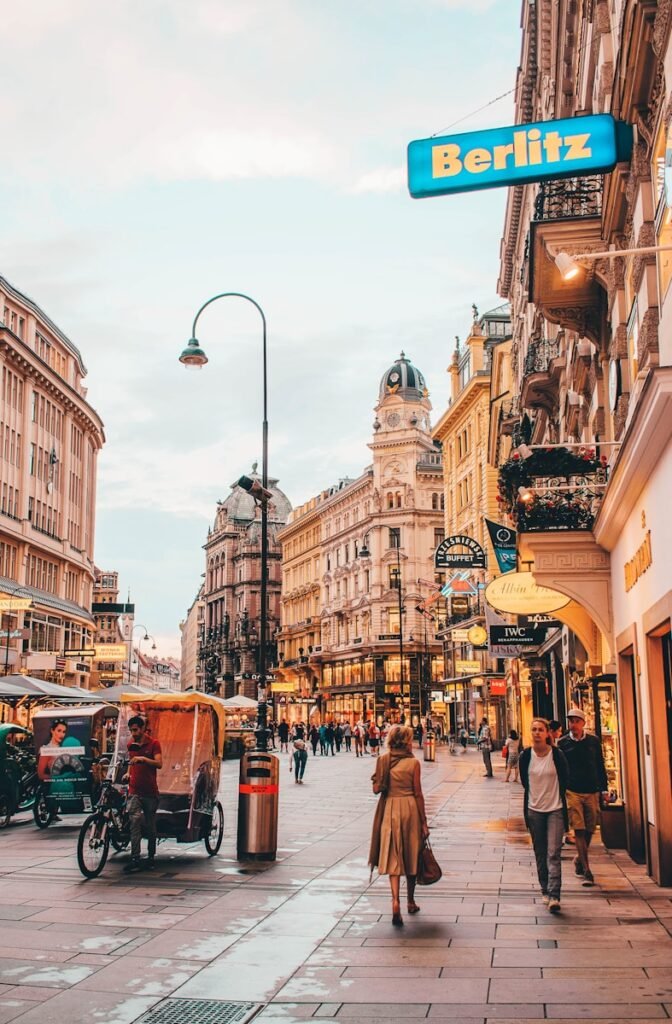
Best Time to Visit
| Mês | Min. Avg. Temp. (°C) | Max. Avg. Temp. (°C) | Average Precipitation (mm) |
|---|---|---|---|
| January | -1 | 3 | 37 |
| February | 0 | 5 | 34 |
| March | 3 | 10 | 41 |
| April | 6 | 15 | 45 |
| May | 11 | 20 | 61 |
| June | 14 | 23 | 74 |
| July | 16 | 26 | 63 |
| August | 16 | 26 | 66 |
| September | 13 | 21 | 52 |
| October | 8 | 15 | 41 |
| November | 3 | 9 | 50 |
| December | 0 | 4 | 41 |
Month-by-Month Weather and Travel Tips in Viena
January
January in Vienna is cold, with average temperatures ranging from -1°C to 3°C. Snow is fairly common, and the city often experiences a captivating winter wonderland. Visitors should bundle up with warm clothing, as you’ll want to explore the historic indoor sites. Consider enjoying a Viennese coffee in a cozy café after a stroll through the snow-dusted streets.
February
February remains chilly, with temperatures similar to January. The festive spirit lingers with winter balls and cultural events providing entertainment. It’s an ideal time to visit museums or catch a classical concert. Layer your clothing and keep a hat and gloves handy, as sudden chills can sneak up on you.
March
March marks the beginning of spring in Vienna, with temperatures gradually rising from 2°C to 10°C. The city slowly awakens from its winter slumber, and early blooms add a splash of color. Though it can be rainy, it’s a perfect time to visit gardens and palaces. Pack an umbrella and enjoy the outdoor revival without the holiday crowds.
April
April in Vienna sees mild weather, fluctuating between 7°C and 15°C. Outdoor activities become more appealing as parks and gardens are in full bloom. Remember, showers are common, so a light waterproof jacket is your best ally. Explore the city’s historic streets on foot or by bicycle for a more leisurely experience.
May
May is a delightful month in Vienna, with comfortable temperatures from 12°C to 20°C. Visitors can bask in the pleasant spring atmosphere as locals enjoy outdoor terraces. Ideal for sightseeing and festivals, it’s wise to have sunglasses and sunscreen at the ready. Outdoor concerts and cultural events abound, making it a vibrant time for a visit.
June
June kicks off summer with warm, enjoyable weather ranging from 16°C to 24°C. The city buzzes with energy, offering a plethora of outdoor festivals and open-air concerts. Light clothing and sunscreen are essential, and public parks provide a lush escape from the urban hustle. It’s a great time to explore Vienna’s vibrant outdoor scenes.
July
July is one of the hottest months, with temperatures between 18°C and 26°C. Known for its long, sunny days, it invites you to partake in river activities and street festivals. Carry water to stay hydrated and wear comfortable sandals for all-day walking tours. Enjoy the lively atmosphere, but be prepared for occasional thunderstorms.
August
August continues the summer warmth, with temperatures comparable to July. It’s a prime time for evening strolls along the Danube Canal and open-air cinema viewings. While many locals head on vacation, tourists find plenty of activities to fill their itinerary. Pack a mix of summer wear and light layers for cooling evenings.
September
September brings a touch of autumn with cooler weather ranging from 14°C to 21°C, making it an ideal month for exploration. Fewer tourists and comfortable temperatures make for pleasant sightseeing. The city celebrates wine harvests, providing a perfect chance to savor Austrian wines. A light jacket or sweater is advisable for cooler nights.
October
October in Vienna is crisp and colorful, with temperatures between 9°C and 16°C. The foliage paints the city in earthy tones, creating a picturesque backdrop. It’s the perfect time for cultural visits and walking tours through historic neighborhoods. The cool air calls for a medium-weight coat to stay comfortable.
November
November is chilly, with the onset of winter, boasting temperatures from 4°C to 9°C. The festive season begins with seasonal markets and events, offering a warm atmosphere despite the cold. Dress in layers and enjoy the early Christmas spirit across Vienna’s squares. It’s a time for indoor warmth and cultural indulgences.
December
December transforms Vienna into a winter wonderland, with temperatures between 0°C and 5°C. The city sparkles with Christmas markets, lights, and holiday cheer. Indulge in mulled wine and local treats while embracing the festive ambiance. Warm clothes and a festive spirit will enhance your winter adventure in this enchanting city.
Main tourist neighborhoods
Top 5 Tourist Districts in Vienna
Innere Stadt
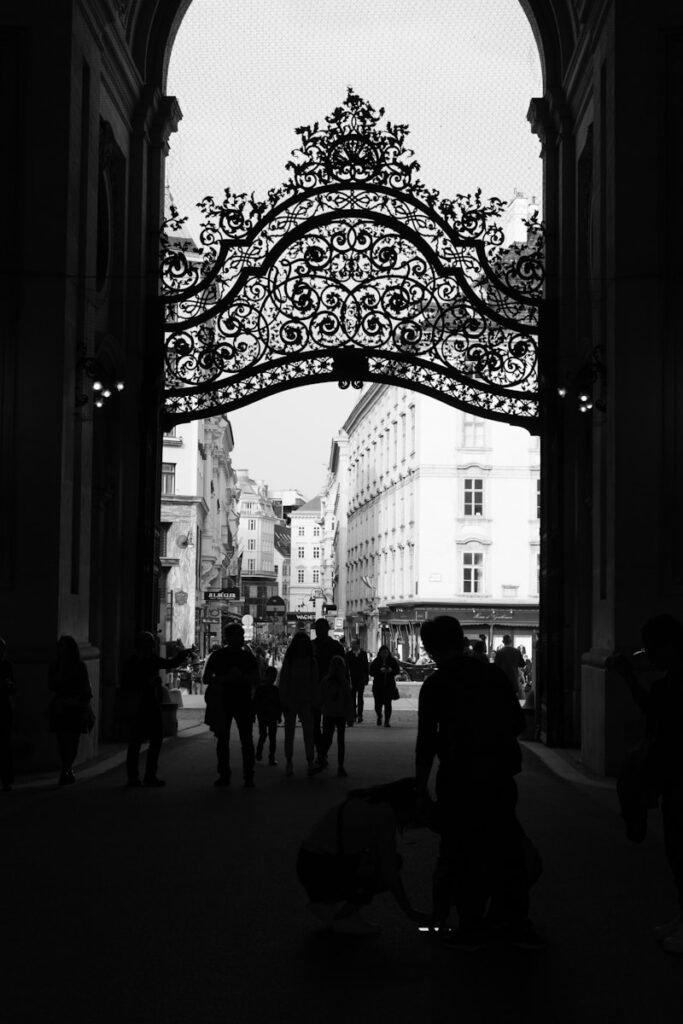
The Innere Stadt is the historic center of Vienna, encircled by the famous Ringstraße boulevard. This area is home to numerous architectural marvels, including the iconic St. Stephen’s Cathedral with its multi-colored tile roof. As you wander through its narrow streets, you’ll encounter luxurious boutiques, cozy cafes, and world-class museums like the Albertina. The district also hosts the majestic Hofburg Palace, once the primary residence of the Habsburg dynasty. Don’t miss a horse-drawn carriage ride for a quintessential Viennese experience in this charming area.
Leopoldstadt
Leopoldstadt is a lively district located just across the Danube Canal from the city center, known for its multicultural flair and green spaces. The Prater park, with its iconic Giant Ferris Wheel, offers vast green expanses for leisurely strolls, picnics, and amusement rides. The district’s Karmelitermarkt is a bustling market area perfect for foodies looking to sample local Viennese delicacies and international cuisine. Leopoldstadt’s vibrant mix of history, nature, and culture makes it an intriguing destination for visitors seeking a more offbeat Viennese experience.
Mariahilf
Mariahilf is renowned for its vibrant shopping street, Mariahilfer Straße, which is Vienna’s longest shopping avenue. Here, fashion enthusiasts can immerse themselves in a diverse range of stores, from renowned international brands to unique local boutiques. The area is also known for its lively atmosphere and abundance of bars, cafes, and eateries. Cultural attractions include the Theater an der Wien, a historic opera house, and the whimsical House of the Sea, a converted flak tower housing an aquarium and zoo. Mariahilf offers a dynamic mix of culture, shopping, and entertainment.
Neubau
Neubau, known for its creative spirit, is a haven for art lovers and hipsters alike. This district is home to the MuseumsQuartier, one of the largest cultural complexes in the world, boasting an array of museums and contemporary art spaces including the Leopold Museum and MUMOK. Neubau’s cobblestone streets are lined with independent galleries, design shops, and artisan cafes. The area is also famous for its vibrant street art scene and the indie vibe of the Spittelberg neighborhood, known for its well-preserved Biedermeier architecture. Neubau is a cultural hub that captures the essence of modern Vienna.
Landstraße
Landstraße is a diverse blend of residential charm and architectural grandeur. The district is perhaps best known for the splendid Belvedere Palace, with its exquisite gardens and art collections, which include works by Klimt and Schiele. Landstraße also hosts the Hundertwasserhaus, a unique apartment building designed by the artist Friedensreich Hundertwasser, attracting architecture enthusiasts worldwide. The neighborhood offers a relaxed ambiance with its local cafes, traditional Heuriger wine taverns, and the peaceful Stadtpark, making it an ideal spot for leisurely exploration and experiencing Vienna’s Art Nouveau legacy.
Where to Stay
Where to Stay
Vienna offers a variety of neighborhoods to suit every type of traveler, whether you’re seeking a romantic getaway, a family-friendly environment, budget-conscious options, or luxurious accommodations. For couples looking for a romantic retreat, the charming district of Innere Stadt is perfect. Here, you’ll find cobblestone streets and historic landmarks, providing the ideal setting for a lovely stroll.
If you’re traveling with family, consider staying in Neubau. It’s a vibrant area with plenty of parks, museums, and activities that cater to all ages. For those on a budget, the Mariahilf district offers affordable accommodations while still being close to the city’s major attractions and lively shopping streets.
Travelers looking to indulge in luxury should head to the Landstraße district. This area is home to high-end hotels and fine dining, providing a sophisticated and glamorous experience. No matter where you choose to stay in Vienna, each district offers its own unique charm and amenities.
Ready to book your perfect stay in Vienna? Discover amazing deals and a wide selection of hotels on Trip.com now!
Must-See Attractions
Schönbrunn Palace
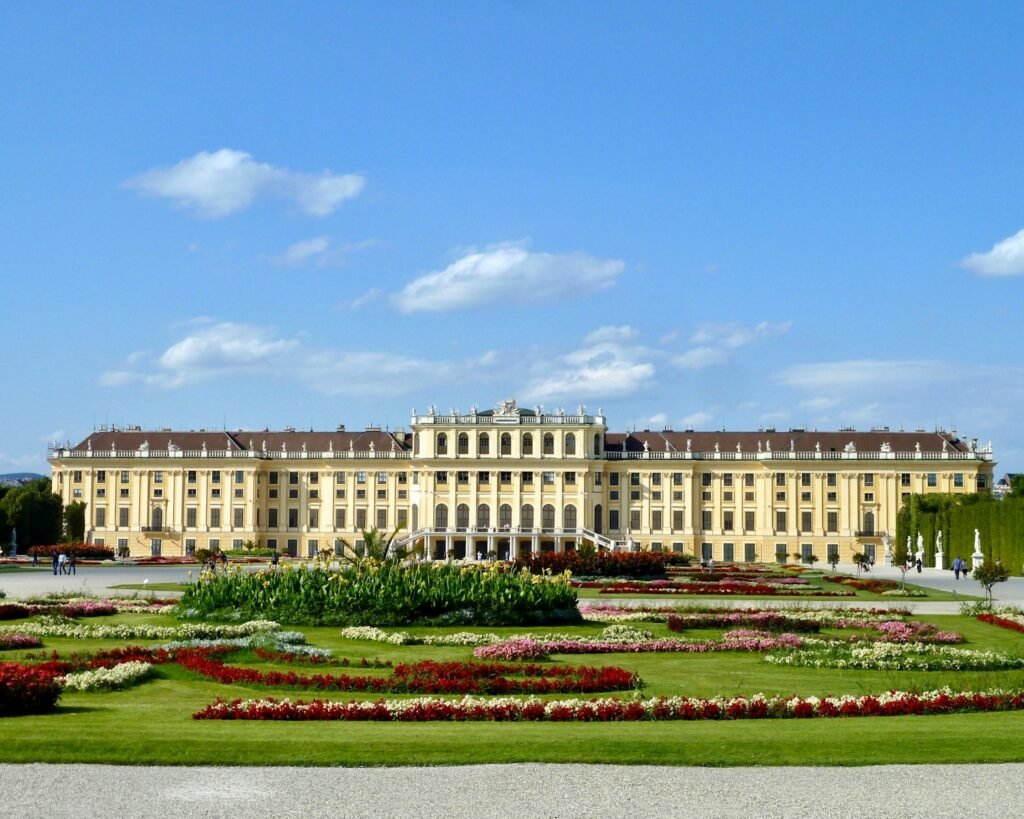
The Schönbrunn Palace is a stunning baroque residence located in Vienna’s Hietzing district. Known as the former summer residence of the Habsburg monarchs, the palace offers a glimpse into royal life with its opulent rooms and vast gardens. As a UNESCO World Heritage Site, it’s a treasure trove of history and architecture. To fully enjoy your visit, explore the Gloriette, take a stroll through the beautifully manicured gardens, and don’t miss the Maze and Labyrinth. Audio guides are available to enhance your experience and provide deeper insight into its past.
St. Stephen’s Cathedral
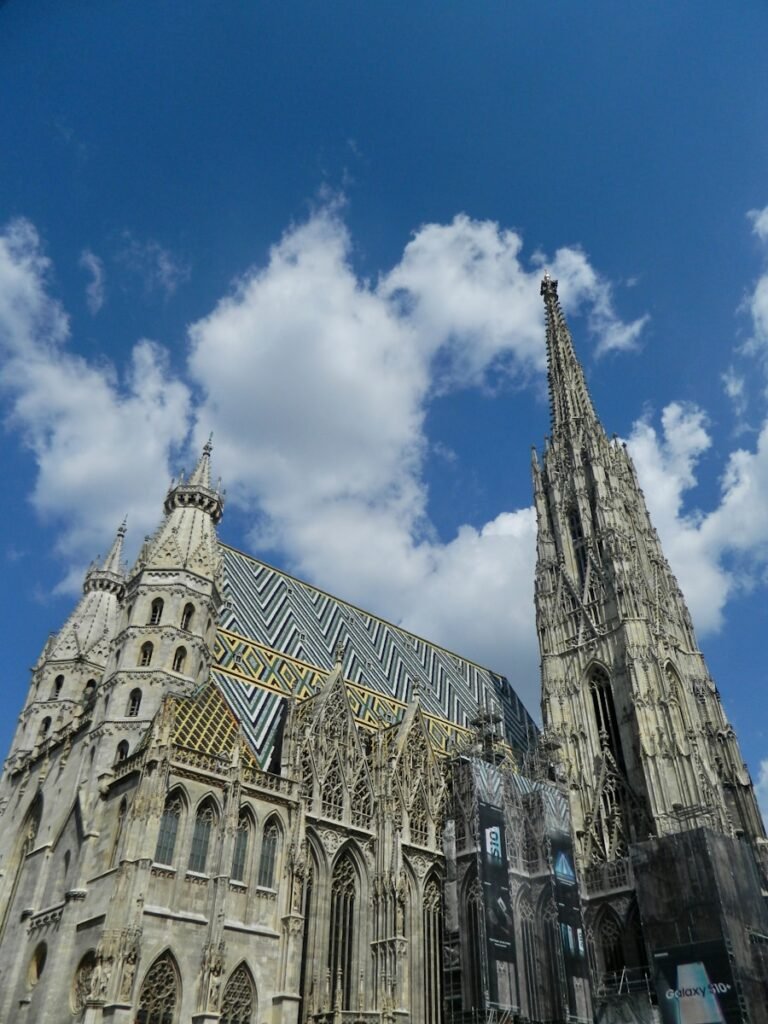
St. Stephen’s Cathedral, or Stephansdom, stands as a magnificent Gothic masterpiece in the heart of Vienna, on Stephansplatz. Its towering spire and richly decorated roof tiles make it an iconic symbol of the city. The cathedral has been witness to many of Vienna’s significant historical events. Ascend to the top of the South Tower for breathtaking views of the city, or take a guided tour to discover its hidden catacombs and fascinating history. Ensure you have time to admire the intricate details of its interior and the beauty of its stained glass windows.
Belvedere Palace
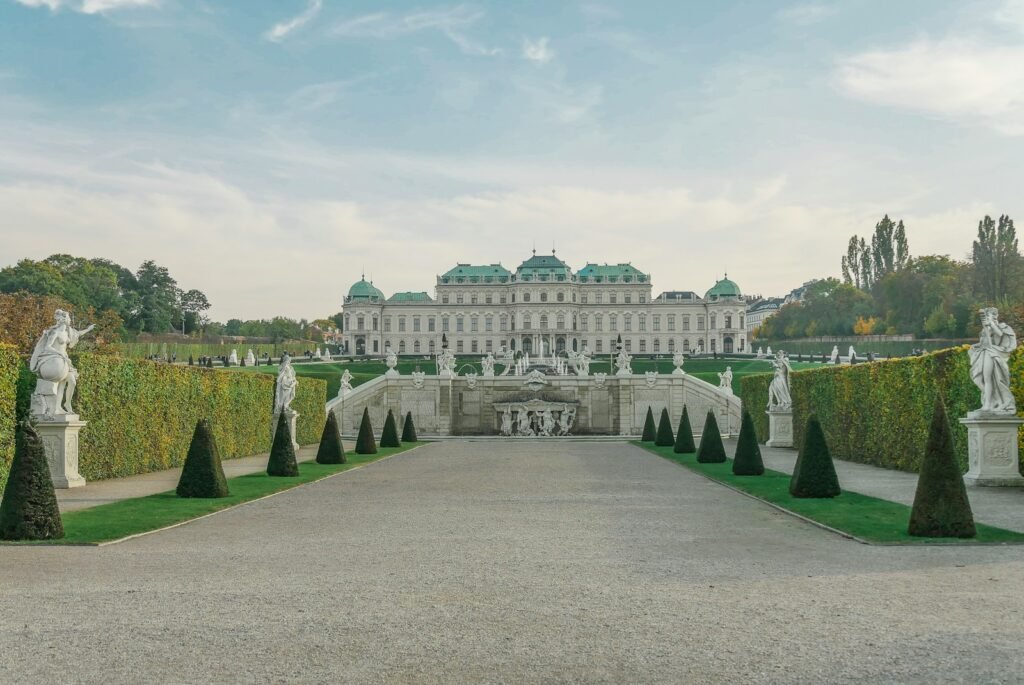
The Belvedere is an architectural marvel consisting of two stunning baroque palaces – the Upper and Lower Belvedere. Located in Vienna’s third district, it houses an impressive art collection including works by Gustav Klimt, with “The Kiss” being a highlight. The palace grounds offer splendid gardens ideal for a leisurely walk. To make the most of your visit, explore both palaces and enjoy the panoramic views of Vienna from the Upper Belvedere. Art enthusiasts will find the extensive collection of Austrian art from the Middle Ages to the present particularly rewarding.
Vienna State Opera
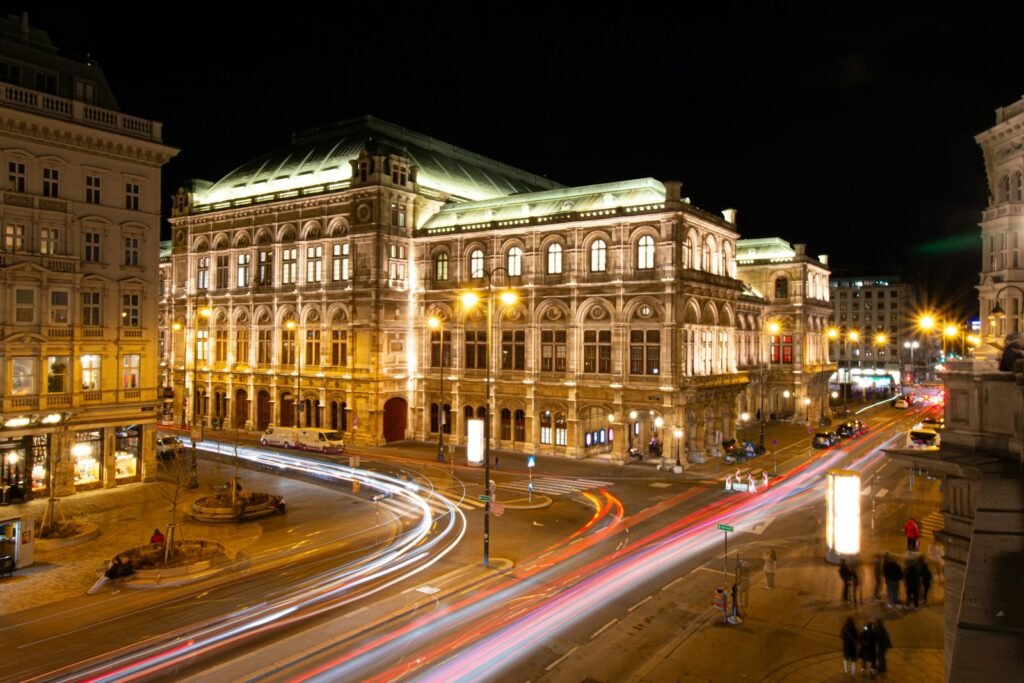
The Vienna State Opera, one of the world’s leading opera houses, is a cultural hub in the heart of Vienna on the Ringstraße. Known for its breathtaking productions and historical significance, it hosts more than 350 performances annually. A guided tour of the opera house reveals its lavish interiors and provides insight into its rich tradition. Attending a performance is a must, with the experience enhanced by the building’s stunning architecture. For an affordable experience, consider standing room tickets, which are popular among both locals and tourists.
Prater Park and the Giant Ferris Wheel
Prater Park, a large public park in Vienna’s Leopoldstadt district, is home to the iconic Giant Ferris Wheel, or Riesenrad. The Ferris wheel offers unparalleled views of the city, making it a favorite among tourists. The park itself is a recreational oasis, offering more than just amusement rides—it also features walking paths, green spaces, and dining options. For a memorable visit, ride the Ferris wheel at sunset for a stunning panoramic view and explore the diverse attractions in the park at your leisure.
Hofburg Palace
The Hofburg Palace is a significant historical complex in the center of Vienna, serving as the former imperial palace of the Habsburg dynasty. It now houses several museums, including the Sisi Museum, dedicated to the beloved Empress Elisabeth. Its expansive architecture and historical interiors tell the story of Austrian history and imperial life. Visitors should explore the Imperial Apartments and the Treasury to truly appreciate the opulence and history embodied within. The palace is also the official residence and office of the Austrian president.
Albertina Museum
The Albertina Museum, located near the Vienna State Opera, is renowned for its extensive collection of graphic arts. It hosts works by masters such as Leonardo da Vinci, Raphael, and Michelangelo, along with a significant collection of photography and architectural drawings. While there, make sure to visit the Habsburg State Rooms, which are a masterpiece of neoclassical architecture. To maximize your time, check out the rotating exhibitions that often feature contemporary art and photography alongside the museum’s permanent collection.
Naschmarkt
Naschmarkt is Vienna’s most popular market, offering a wide variety of fresh produce, spices, international delicacies, and vibrant food stalls located on the Wienzeile, near the city center. It’s a feast for the senses and an ideal location to experience local Viennese culture and cuisine. Visiting on a Saturday can be especially rewarding as the adjacent flea market opens, offering antiques and unique finds. Try to sample the various snack stalls and don’t miss the delightful cafes and restaurants nestled within the market, perfect for a leisurely lunch.
Karlskirche
Karlskirche, or St. Charles’s Church, is an exquisite example of baroque architecture located in Vienna’s Karlsplatz. Its impressive dome and intricately decorated interior feature elements from both classical and Renaissance styles. A standout attraction within is the elevator that takes visitors up to a viewing platform inside the dome, offering close-up views of the frescoed ceilings and panoramic vistas of Vienna. Attend a classical concert here for a unique experience that combines music with stunning artistry.
Museumsquartier
The Museumsquartier, or MQ, is a vibrant cultural quarter in central Vienna, offering an eclectic mix of art, architecture, and lifestyle. It houses an array of museums, including the Leopold Museum, the contemporary MUMOK, and the Kunsthalle. Each of these venues hosts remarkable exhibitions in diverse artistic fields. The area also features cafes and shops, making it a lively spot for relaxation and socializing. Visitors should take time to explore the dynamic exhibitions and enjoy the open-air courtyards that frequently host creative performances and events.
Nightlife and what to do at night
The Loos American Bar
Located in the heart of Vienna, Loos American Bar is a historic cocktail bar designed by the renowned architect Adolf Loos. This intimate venue offers a classic and sophisticated atmosphere, drawing a mix of locals and tourists who appreciate finely crafted cocktails and an elegant setting. The best time to visit is during weekdays to avoid larger crowds and fully enjoy the artistic design and personal service. Situated near the bustling Kärntner Straße, it’s ideal for a quiet drink after exploring the city center. Remember to try their signature cocktails and observe the stunning interior details inspired by early 20th-century design.
Skylines Rooftop Bar
For those seeking a stylish night out with panoramic views of Vienna’s skyline, Skylines Rooftop Bar is the place to be. Located atop a skyscraper in the business district, it caters to young professionals and trendy locals. The energy here peaks during Thursday and Friday nights, when a live DJ enhances the vibe against a backdrop of shimmering city lights. The bar offers a range of innovative cocktails and gourmet snacks, making it perfect for a glamorous evening. Arrive early to snag the best spots with views, especially on clear evenings when the sunset over Vienna is a spectacle.
Spittelberg Quarter
Nestled in the heart of Vienna, Spittelberg Quarter is a charming neighborhood known for its cozy cobblestone streets and vibrant nightlife. Frequented by both locals and tourists, the area is particularly lively on weekends. With a variety of bars, restaurants, and pubs lined along the streets, Spittelberg offers a welcoming ambience for those seeking a relaxed yet lively evening. The cultural aesthetic of the district, with its historic architecture and bohemian spirit, makes it a unique spot for nighttime exploration. Don’t miss the chance to visit during the annual Christmas market for an extra festive experience.
Vienna State Opera
For a touch of culture, spend your evening at the Vienna State Opera, one of the most illustrious opera houses in the world. Located in the Innere Stadt district, this venue attracts a sophisticated crowd of opera aficionados from around the globe. The elegant atmosphere and ornate architecture enhance the experience of any performance, be it a classic opera or a contemporary ballet. Tickets can sell out quickly, especially for popular shows, so it’s wise to book in advance. Dress up for the occasion and take a walk around the lavish interiors during intermissions to appreciate its rich history.
Naschmarkt Restaurants
Vienna’s Naschmarkt is a bustling area that transforms into a social hub when the sun sets. With an array of restaurants offering cuisines from around the world, it draws food lovers and night owls who are keen on enjoying a lively dining experience. Friday and Saturday evenings are particularly vibrant, with a young, energetic crowd hopping between eateries and bars. Located just south of the city center, it’s convenient to reach and explore. As the lights come on, the market exudes a captivating charm, making it a perfect spot for enjoying an alfresco dinner or a late-night snack alongside locals.
Typical foods and where to try them
Wiener Schnitzel
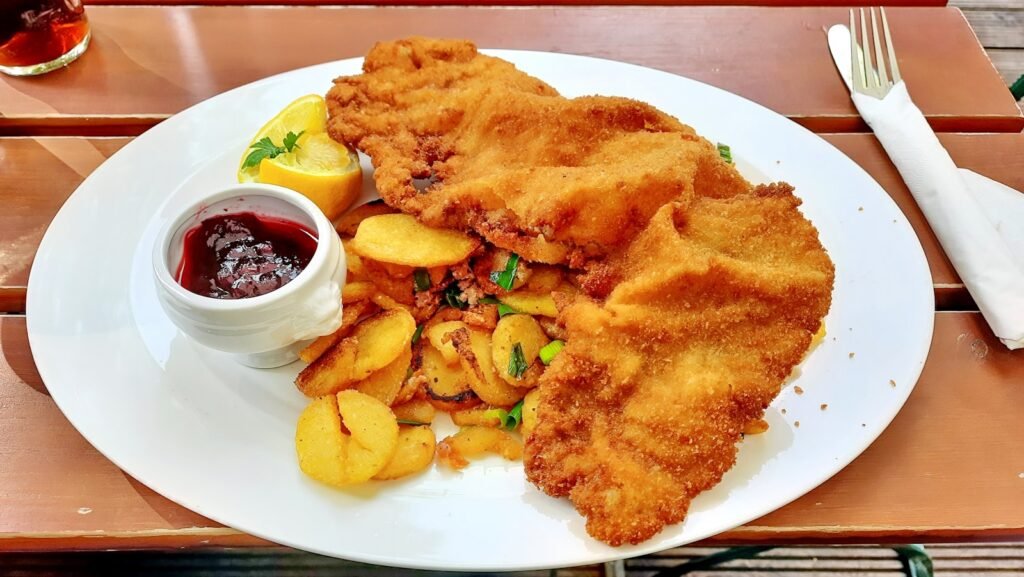
Wiener Schnitzel is one of Vienna’s most iconic dishes, representing the culinary soul of Austria. This delightful meal consists of a thin breaded and pan-fried veal cutlet. Known for its golden, crispy exterior, the schnitzel is traditionally served with a slice of lemon for added zest, and often accompanied by a side of potato salad or lingonberry sauce. Its origins can be traced back to the 19th century, reflecting Vienna’s rich cultural tapestry. The dish stands as a symbol of the city’s culinary heritage and is a must-try for anyone visiting the Austrian capital.
Sachertorte
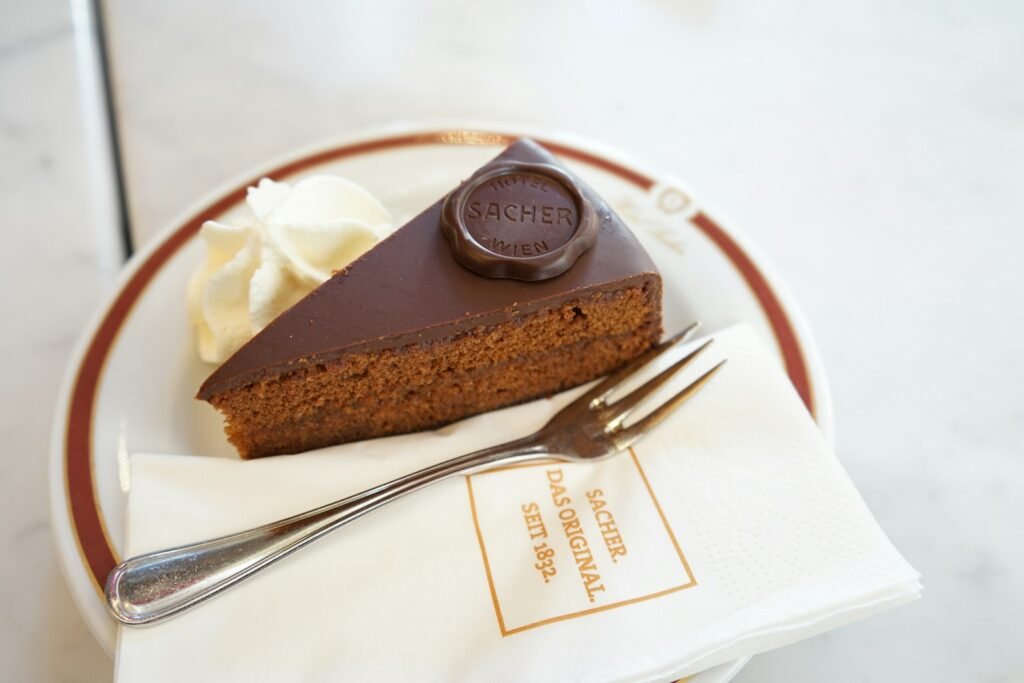
The Sachertorte is a decadent chocolate cake that holds a special place in the hearts of both locals and visitors. Created in 1832 by Franz Sacher for Prince Wenzel von Metternich, this iconic dessert features a dense chocolate sponge with a layer of apricot jam and a smooth, dark chocolate icing. Traditionally accompanied by a dollop of unsweetened whipped cream, the Sachertorte is served in many Viennese cafés. Its intense flavors have made it a staple in Viennese patisserie, showcasing the city’s flair for combining rich ingredients with a deep culinary tradition.
Tafelspitz
Tafelspitz is a cherished Viennese dish featuring boiled beef served with broth. Traditionally cooked with root vegetables such as carrots and leeks, the dish is seasoned with herbs like bay leaves and peppercorns. Tafelspitz is typically accompanied by a range of side dishes, including apple and horseradish sauce, creamed spinach, and roasted potatoes. Beloved by Emperor Franz Joseph I, this dish embodies comfort and has become a prominent aspect of Viennese gastronomy. It continues to be a highlight on menus, reflecting the warm, hearty dining culture of Vienna.
Apfelstrudel
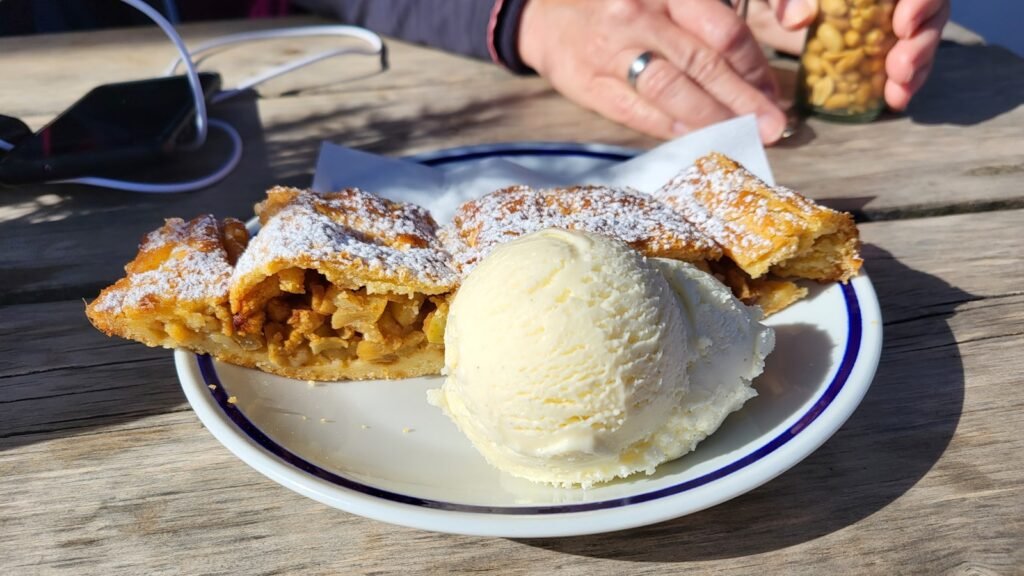
Apfelstrudel is a celebrated Austrian pastry, known for its flaky crust and sweet, spiced apple filling. This dessert combines tart apples with cinnamon, sugar, and raisins, all wrapped in a thin pastry dough. The history of Apfelstrudel dates back to the Austro-Hungarian Empire, with its culinary influences seen across Central Europe. Often served warm, with a dusting of powdered sugar on top, it can be accompanied by vanilla ice cream or whipped cream. Its delicate balance of flavors and textures make it a beloved conclusion to a classic Viennese meal.
Kaiserschmarrn
Kaiserschmarrn is a delightful, fluffy pancake dish that finds its roots in Austrian imperial cuisine. This whimsically named “Emperor’s Mess” consists of lightly caramelized pieces of a rich pancake, cut into bite-sized portions. Traditionally served with fruit compote or a dusting of powdered sugar, the dish is indulgent and satisfying. Its origins are linked to Emperor Franz Joseph I, further anchoring its place in Austria’s royal culinary lineage. Kaiserschmarrn is often enjoyed as a dessert or even a main course, celebrated for its unique texture and comforting sweetness.
How to get around the city
Public Transportation in Vienna: A Tourist’s Guide
Vienna boasts a highly efficient and well-connected public transportation system that makes it easy for tourists to navigate the city. The main modes of public transport include the metro, bus, tram, and train, each of which is designed to get you to your destination quickly and comfortably.
Common Modes of Transport
The metro, known as the U-Bahn, is perhaps the most popular way to get around Vienna. Its network comprises five lines that cover a significant portion of the city. Buses and trams provide excellent connectivity in areas where the metro does not reach, ensuring that no part of Vienna is left inaccessible. Trains, particularly those of the S-Bahn, are perfect for reaching the city’s suburbs and neighboring regions.
Alternative Transportation Options
Cycling is also a popular transport option in Vienna, with numerous bike lanes and rental services available throughout the city. For shorter distances, e-scooters can be a fun and convenient alternative. Plus, apps like Uber and Bolt offer rideshare services that can be a lifesaver when public transport isn’t operating or if you’re looking for more direct service.
How the Public Transport System Works
Vienna’s public transportation system requires a valid ticket for travel. Tickets can be purchased at vending machines in metro stations, at most tram stops, and even via mobile apps. Options include single-ride tickets, 24-hour passes, and multi-day passes, offering flexibility based on your itinerary.
Tickets are generally not checked upon entering the metro, but be prepared for occasional inspections by transport personnel. The system’s efficiency is commendable, with trains, trams, and buses typically running on schedule.
Using Apps for Convenience
For tourists, using transport apps can be particularly useful at night when public transport services are limited. They provide a convenient and safe way to get back to your accommodation after a late night out.
Exploring Beyond Vienna
While Vienna itself is full of attractions, there are breathtaking landscapes and sites to explore just outside the city. In such cases, renting a car can be a practical option. Click here to rent a car with Rentacar and start your adventure beyond the city limits.
Discover Vienna: Practical Tips and Intriguing Insights
1. Embrace the Viennese Coffee Culture
Vienna’s coffee culture is a UNESCO-recognized treasure, and visiting a traditional café is a must. These establishments are perfect spots to unwind, read, or simply people-watch. Try ordering a “Melange,” the Viennese twist on a cappuccino, and pair it with a slice of Sachertorte for an authentic experience. Many cafés also have an impressive selection of international newspapers, adding to their unique charm.
2. Navigate the Public Transport Like a Local
Vienna boasts an efficient public transport network consisting of buses, trams, and subways that can take you almost anywhere in the city. Purchasing a 24, 48, or 72-hour travel pass can save you money and time. The system is user-friendly, and the app can help you plan routes effortlessly. Don’t forget to validate your ticket before boarding to avoid fines.
3. Explore the Naschmarkt for Culinary Delights
The Naschmarkt, Vienna’s largest open-air market, offers an eclectic mix of fresh produce, international food stalls, and quirky shops. Open every day except Sunday, this market is a sensory feast. Be sure to haggle for antiques or sip on local wines if visiting on a Saturday. The lively atmosphere and diverse flavors make it a favorite among both locals and tourists.
4. Time Your Visit to Schönbrunn Palace
While Schönbrunn Palace is a must-see, it can become overwhelmingly crowded during peak hours. Visit early in the morning or later in the afternoon to explore the opulent rooms and expansive gardens at a more leisurely pace. Don’t miss the Gloriette for a panoramic view of Vienna, especially beautiful during sunrise or sunset.
5. Discover Vienna’s Green Spaces
Vienna is dotted with beautiful parks and green spaces that offer a peaceful retreat from the bustling city. The Prater Park, with its iconic Ferris wheel, is perfect for long strolls or picnics. For a more serene experience, try the Stadtpark, home to the famous golden statue of composer Johann Strauss II. These spaces are ideal for relaxation and offer a glimpse into the leisurely side of Viennese life.
Frequently Asked Questions about the city
What is the official currency in Vienna?
The official currency in Vienna is the Euro (€).
What is the time zone of Vienna?
Vienna is in the Central European Time (CET) zone, which is UTC +1. During daylight saving time, it shifts to CEST, UTC +2.
What language is spoken in Vienna?
The official language in Vienna is German, but English is widely spoken, especially in tourist areas.
How can I get around Vienna?
Vienna has an efficient public transport system that includes buses, trams, and the U-Bahn (subway). Tickets can be used across all modes of transport.
Is Vienna a safe city for travelers?
Vienna is considered very safe for travelers. However, as with any major city, it’s advisable to stay alert and safeguard your belongings.
What is the voltage in Vienna?
The voltage in Vienna is 230V, with a frequency of 50Hz. The power plugs and sockets are of type F.
Are tips expected in Vienna?
Tipping in Vienna is customary, usually about 5-10% of the bill in restaurants if not already included. For other services, rounding up the bill is common.
What is the average daily cost for a traveler in Vienna?
The average daily cost for a budget traveler is around €50-70, mid-range travelers might spend around €150-200, and luxury travelers could spend upwards of €300.
What is the climate like in Vienna?
Vienna has a temperate oceanic climate, with warm summers and cold, sometimes snowy winters. Spring and fall are moderate and pleasant.
Booking Resources
- Airalo — Get instant internet wherever you go with an eSIM. No more hunting for local SIM cards or Wi-Fi hotspots.
- Tiqets — Book tickets and tours for top attractions easily, often with skip-the-line options to save you precious vacation time.
- Trip.com — Find and compare hotels and flights worldwide at great prices, with flexible booking options.
- Rentacar — Secure a rental car to explore beyond the usual tourist spots and travel at your own pace.
Some links may earn us a commission, helping keep this site free for you. While we only recommend trusted services, we’re not responsible for the products or services provided. Thanks for supporting our work!

